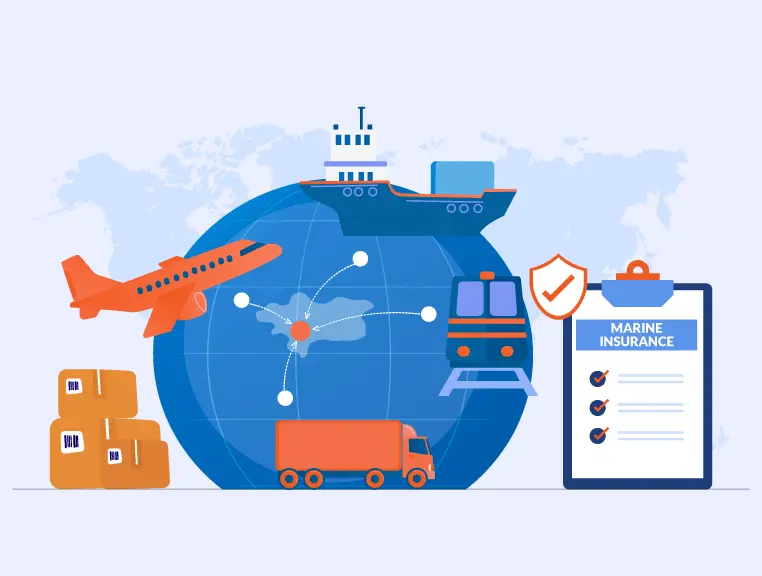Here are guidelines which are attached with the duration of the marine inland transit insurance clause –
Clauses (A) and (B)
The insurance becomes valid from the time the goods leave the warehouse or place of storage as mentioned in the inland transit insurance policy document, and it is terminated either:
- On the successful delivery of goods to the consignees or the final warehouse or place of storage of the other party as mentioned in the policy document
- In respect of the transit by train only, or rail and road, on the expiry of seven days after the arrival of the railway wagon at the railway station
- Where the goods are being transported by road only on the expiration of seven days after the arrival of the vehicle at the destination as mentioned in the policy document.
However, the inland transit insurance shall remain active if there is a delay, forced discharge, or deviation which is beyond the control of the policyholder. Also, computed the tenure of seven days from midnight from the day of arrival of the railway wagon at the destination station or the vehicle at the destined city.
In certain situations, it is feasible to extend the period to seven days. Provided goods are lying in the road/railway premises or any other warehouse, specifically identified in the policy. Here the coverage extends for eight weeks (in addition to the given seven days).
Clause (C)
In the case of Clause (C), the duration provided is different. Here, the insurance is attached with the loading of each package into the truck for the commencement of the transit. It continues during the ordinary course of transportation as well, which includes customary transshipments, if any and ceases to exist immediately after unloading-
- At the destined railway station if it is a rail transit; or
- At the destined point if it is a road transit
Case: 1
Established in 2000, L.S Engineering has earned a name for itself in the engineering sector in a short span of time. Considering the risks involved in the transportation of goods from one place to another. The company also purchased an inland transit insurance policy for the safe transportation of its goods domestically.
Read More: What is Marine Insurance?
Last year, the company bagged a deal with M.J Automobile, therefore, the latter sent engineering items to the former.
In this case, the coverage of the inland transit insurance policy started from the time the goods left the warehouse of L.S Engineering until they reached their destination.
Here the duration of inland transit insurance was like this –
- 1st July 2016 – S Engineering sent its consignment of engineering items via railway.
The inland transit insurance cover started from the time the goods left the warehouse of L.S Engineering.
- 4th July 2016 – Goods reached the destination of M.J Automobile.
The inland transit insurance stayed active till the time; they reached the warehouse or destination as stated in the policy document.
Case: 2
Z.S Paper signed a contract of engineering items with L.J Engineering, Therefore, the latter sold engineering goods to the former.
Read More: What is the increased value clause in marine inland transit insurance?
In this case, L.J Engineering had an inland transit insurance policy with it. It means, here the duration of inland transit insurance would be like this –
- The time the goods left the warehouse of L.J Engineering
- The time when engineering goods reached the warehouse of Z.S Paper
Here, L.J Engineering transported goods by railway. However, when goods reached the destined railway station, heavy rainfall made it difficult to transport goods. From the railway station to the warehouse of Z.S Paper. As a result, the warehouse only contained the goods.
In this case, inland transit insurance coverage extended the coverage for eight weeks more, including seven days of spending on the railway station.





